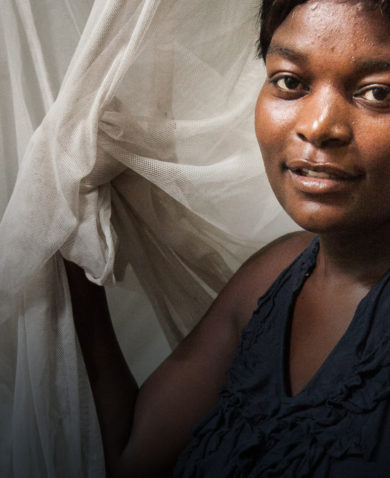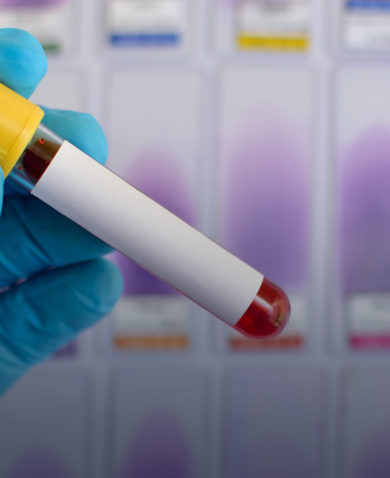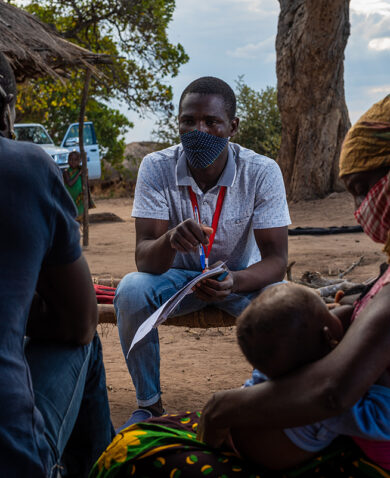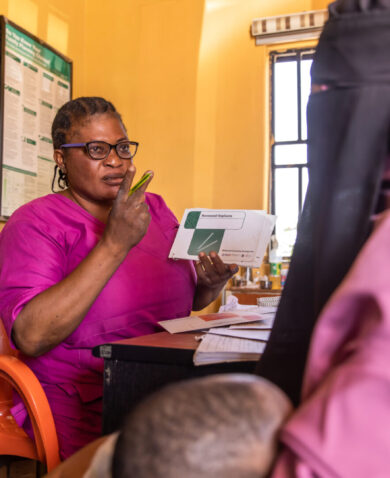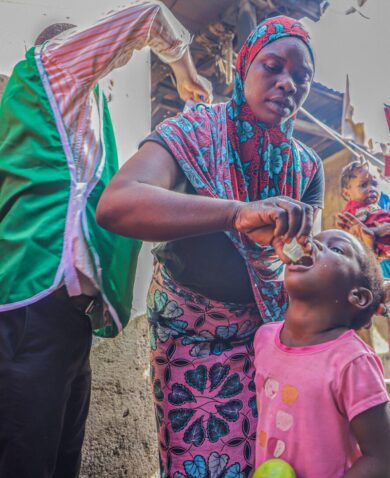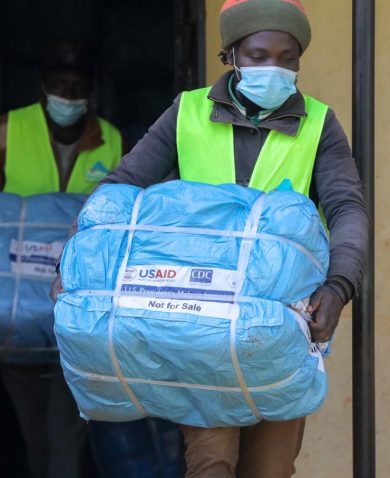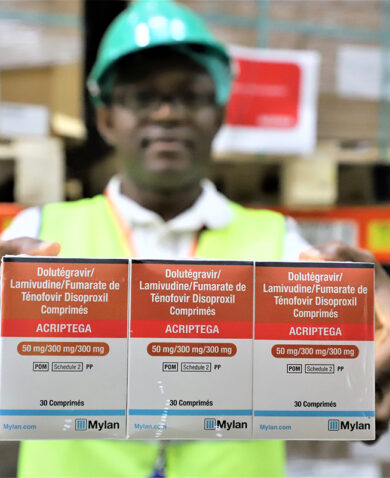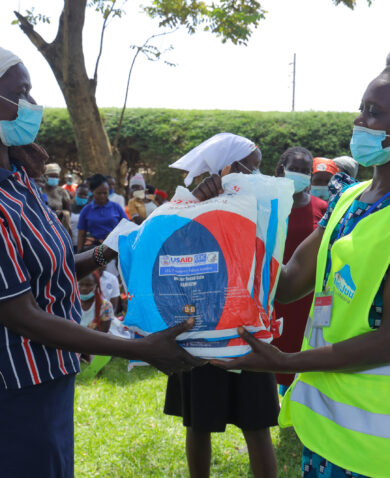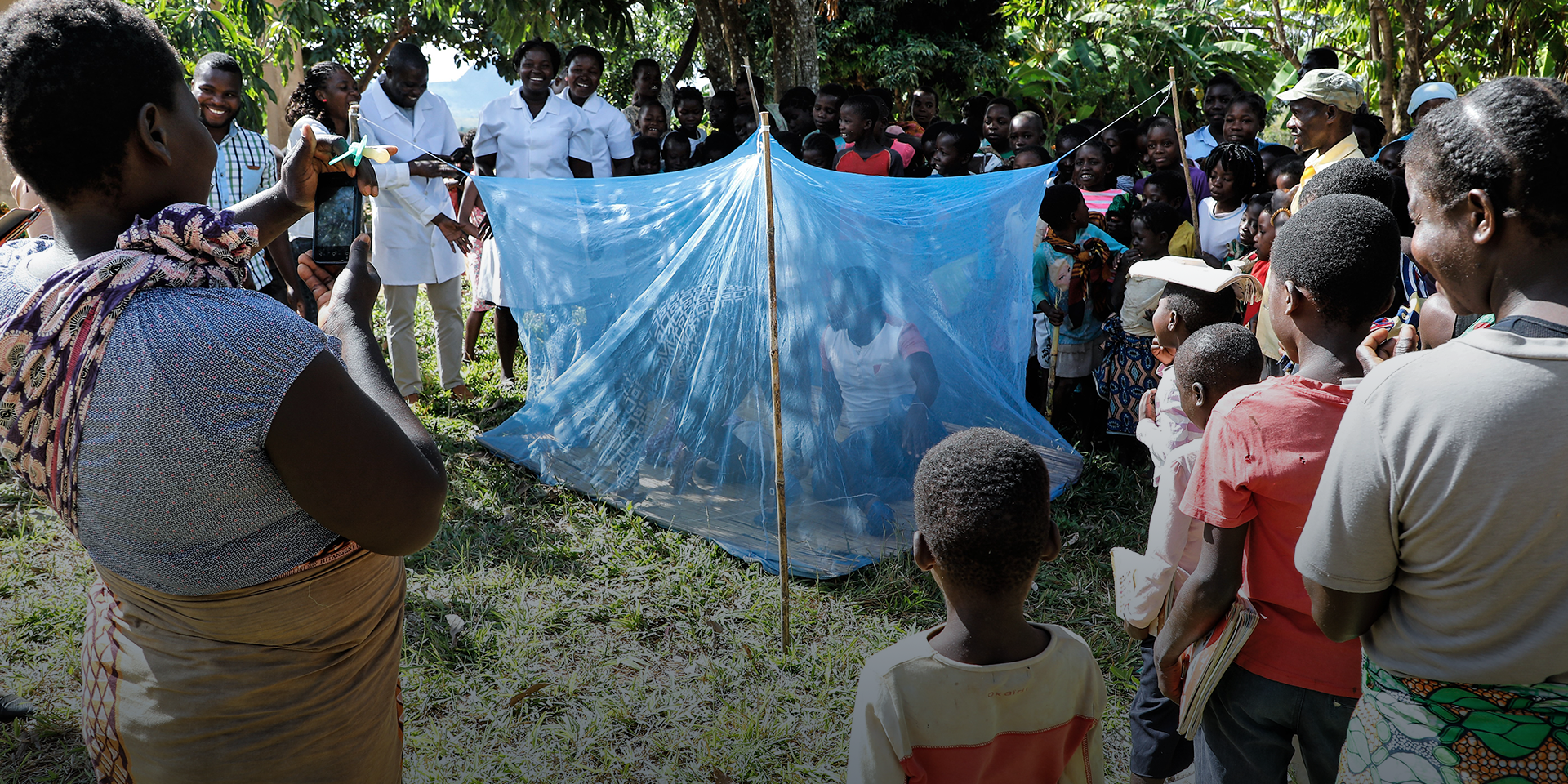
Three Successful Approaches for Reducing the Malaria Burden in Mozambique
December 13, 2021 | 4 Minute ReadIn Mozambique, through the Integrated Malaria Program (IMaP), our work with the National Malaria Control Program (NMCP) led to successful outcomes, including reduced malaria mortality.
Globally, only a small handful of countries are responsible for 95 percent of all malaria cases and deaths. In 2019, five countries made up more than half of the 229 million global case burden, while six countries accounted for 51 percent of the 409,000 malaria deaths. That same year, Mozambique was on both lists and accounted for 4 percent of global malaria cases and deaths.
In Mozambique, Chemonics leads the implementation of the USAID Integrated Malaria Program (IMaP), which works with the National Malaria Control Program (NMCP) to support the government’s efforts to control and, eventually, eliminate malaria. Between 2018 and 2020, IMaP contributed to a 40 percent decline in malaria mortality in the four provinces where the program is present: Cabo Delgado, Nampula, Tete, and Zambezia. Furthermore, data shows a decrease in the proportion of malaria deaths to overall deaths from 2.2 percent to 1.8 percent. As part of the IMaP team, we attribute these successful outcomes to three uniquely functioning but interconnected approaches: a comprehensive case management approach; a government mentorship approach that promotes local ownership and long-term sustainability; and a data driven approach for strengthening monitoring and evaluation (M&E).
Approach 1: Comprehensive case management
Our four-pronged case management approach is comprehensive and builds capacity through training and mentorship for community and facility-based health care workers (HCWs), laboratory technicians, and district teams:
1. In the community, IMaP trains and mentors community health workers (locally known as agentes polivalentes elementares) on how to conduct household screening and refer patients with fever and malaria-like symptoms to health facilities for further care.
2. At the facility level, the program provides targeted, on-the-job training and mentorship to HCWs on malaria case management. IMaP mentors then observe HCWs during the patient consultation process to ensure they are adhering to national malaria standards of care. The mentors also examine medical records of malaria patients, identify gaps and their root causes, and develop practical strategies to close them. To date, IMaP has trained 4,640 HCWs on case management. In 2021, 93 percent of the HCWs who were observed adhered to proper case management standards and protocols; a significant improvement from 70 percent in 2018.
3. An integral component of IMaP is assessing laboratory capacity for accurately diagnosing malaria. This is done through an external quality assurance system, which identifies the strengths and weaknesses of key laboratory staff. The program, then, will address the weaknesses through targeted mentorship. In 2021, the ability to detect malaria parasites increased to 62 percent from 10 percent in 2019.
4. At the district level, IMaP mentored key stakeholders to lead malaria morbidity and mortality meetings where participants interrogated case outcomes in addition to developing community and facility-based interventions to reduce unnecessary complications and deaths.
Our four-pronged, targeted, and data-driven case management approach has not only shown positive results in managing and mitigating the impacts of malaria, but it has also helped build trust between IMaP mentors and the HCWs undergoing training and mentoring through regular interaction.
Approach 2: Government mentorship to foster locally led implementation
IMaP works together with the province- and district-based government teams responsible for malaria control in Mozambique. We use an integrated, supportive supervision approach to mentor malaria teams. A significant contributor to our success is the use of the national supervision checklist, which we developed in collaboration with other key stakeholders. The supportive supervision done at health facilities improves the quality of care and boosts the confidence that other staff members have in their colleagues delivering malaria-related care. Since 2018, IMaP has conducted 278 of these integrated supportive supervision visits, reaching 403 supervisors in the four provinces in which we work. We also assess the capacity of provincial and district health teams to coordinate, implement, and monitor various malaria interventions and provide targeted mentorship based on the identified gaps.
Furthermore, our monthly malaria data reviews at the provincial and district levels have created a robust culture of data use that continues to improve decision-making. As a result, districts can identify facilities with the greatest need for technical support and deploy teams based on this timely information. Twice a year, we assist the province and district governments in coordinating and facilitating learning agendas with the wider malaria community. Our government mentorship activities and emphasis on local ownership continues to grow and evolve. In 2022, for example, integrated supportive supervision will completely transition to the government in the provinces of Tete and Cabo Delgado – an indicator that we have strengthened the staff capacity and structures in place to a point that they are able to take a lead in this area.
Approach 3: Strengthening M&E systems and data quality for decision making
Our data-driven approach to M&E is efficient and, most importantly, effective. We first piloted our approach in Nampula province, where we introduced digital platforms (such as Zoom) to facilitate data discussions and validate data. By utilizing these platforms, more facilities and their staff have access to vital M&E data, which has led to improvements in the quality of data collected at the district level. Following Nampula’s success, this approach is being expanded to the other three provinces. At the national level, we seconded staff to support the use of the integrated malaria information storage system (iMISS) to ensure real-time availability of data on malaria supervision for use. Additionally, we introduced a monthly malaria bulletin, which has encouraged the timely upload of district and facility-level data as well a friendly competition between regions to demonstrate the largest impact on malaria identification and treatment. For example, by September 2021, at least 99% of supported facilities were reporting complete and timely date in three of the four supported provinces.
These three approaches have been key to IMaP’s success in Mozambique. Through these activities, we’ve been able to successfully support the government to manage malaria and save lives. Despite these successes, however, more still needs to be done to move Mozambique towards malaria control and eventually, elimination. Programs such as IMaP need to continue to support NMCPs to innovate and integrate new strategies to tackle malaria. This includes the scale-up of new evidence based approaches such as Transforming IPT for Optimal Pregnancy’ (TIPTOP) and ensuring accessibility to the newly recommended malaria vaccine.
Banner image caption: People attend a demonstration during a LLIN distribution campaign at a school in Mozambique. The photo was taken by Mickael Breard for GHSC-PSM.
Posts on the blog represent the views of the authors and do not necessarily represent the views of Chemonics.






